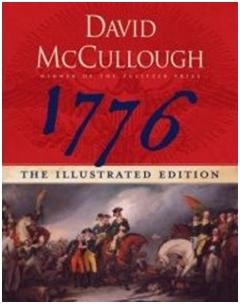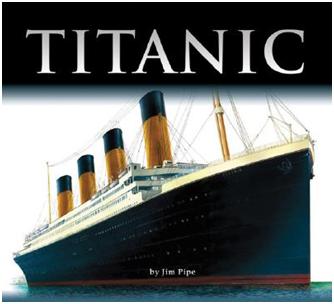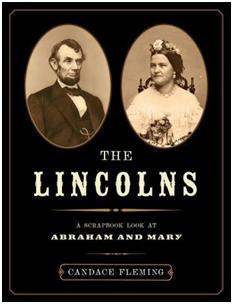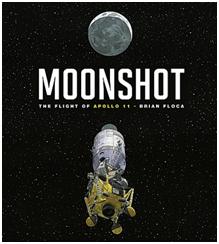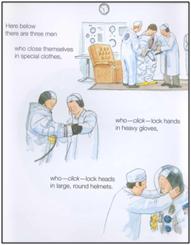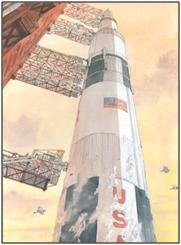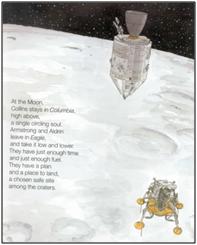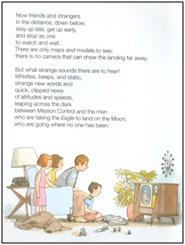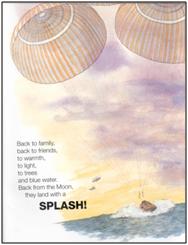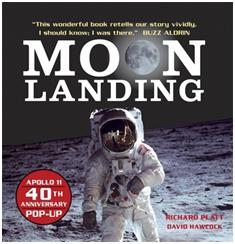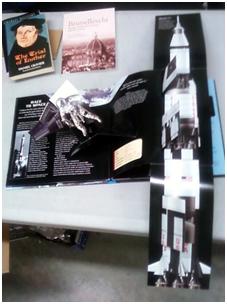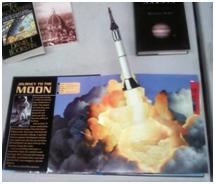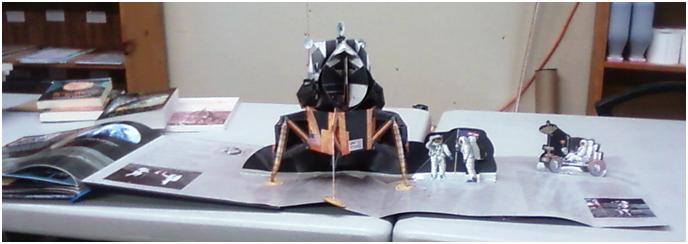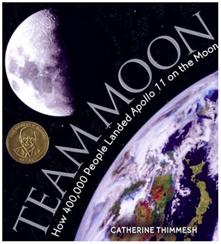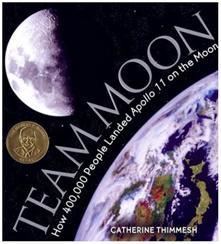There have been a number of innovative books for children and young adults in recent years which have used innovative artwork to transport readers back in time by presenting to them reproductions of original source material. There are excellent books on the year 1776 (1776: The Illustrated Edition) and the Titanic. There was an excellent book this year on Abraham Lincoln (The Lincolns: A Scrapbook Look at Abraham and Mary).
Two new examples of this intriguing category of books arrived recently and I can’t recommend them too highly.
 The first is The French Revolution by Alistair Horne, published by Andre Deutsch/Carlton of the UK. The book is an elegant hardback which comes in its own hardboard slipcase. The text is a very readable recounting of the course of the French Revolution beginning with a summary of the reign of Louis XIV and then proceeding with profusely illustrated 2-page spreads on the summoning of the Estates-General in 1787, the Tennis Court Oath, the Storming of the Bastille, The Attack on the Clergy, the attempted Flight of the King, the Rule of Danton, Marat, & Robespierre, the executions of King Louis XVI & Queen Marie Antoinette, the Terror of 1793-1794; the overthrow of the Committee of Safety in the month of Thermidor (July), 1794; the arrival of Napoleon in Paris in 1795. The book concludes with a brief summary of the four years of rule by the Directory (1795-1799) and its eventual overthrow by Napoleon now a military hero for his victories over Austria in northern Italy, and in Egypt against the British.
The first is The French Revolution by Alistair Horne, published by Andre Deutsch/Carlton of the UK. The book is an elegant hardback which comes in its own hardboard slipcase. The text is a very readable recounting of the course of the French Revolution beginning with a summary of the reign of Louis XIV and then proceeding with profusely illustrated 2-page spreads on the summoning of the Estates-General in 1787, the Tennis Court Oath, the Storming of the Bastille, The Attack on the Clergy, the attempted Flight of the King, the Rule of Danton, Marat, & Robespierre, the executions of King Louis XVI & Queen Marie Antoinette, the Terror of 1793-1794; the overthrow of the Committee of Safety in the month of Thermidor (July), 1794; the arrival of Napoleon in Paris in 1795. The book concludes with a brief summary of the four years of rule by the Directory (1795-1799) and its eventual overthrow by Napoleon now a military hero for his victories over Austria in northern Italy, and in Egypt against the British.
 What really distinguishes this book are its extensive use of contemporary images: paintings, engravings, newspaper cartoons, and eyewitness accounts. Not only are these images reproduced in full color on every page, but the book also includes 30 facsimile reproductions of important documents and artifacts. There is a hand-written extract from the Tennis Court Oath, the original text of the Declaration of the Rights of Man (which American ambassador Thomas Jefferson helped to draft), Marie-Antoinette’s last letter, and Napoleon’s notes from the Siege of Toulon. There is no better way to introduce students to the historical reality of the French revolution. The book is a feast for the eyes and a stunning visual evocation of the past.
What really distinguishes this book are its extensive use of contemporary images: paintings, engravings, newspaper cartoons, and eyewitness accounts. Not only are these images reproduced in full color on every page, but the book also includes 30 facsimile reproductions of important documents and artifacts. There is a hand-written extract from the Tennis Court Oath, the original text of the Declaration of the Rights of Man (which American ambassador Thomas Jefferson helped to draft), Marie-Antoinette’s last letter, and Napoleon’s notes from the Siege of Toulon. There is no better way to introduce students to the historical reality of the French revolution. The book is a feast for the eyes and a stunning visual evocation of the past.
I find the events of the French Revolution tragic in most respects, but its significance is immense. One cannot understand the modern world without coming to grips with it. The textbooks almost always compress it into an incomprehensible short set of paragraphs and suggest connections and continuity with the American Revolution. They tend to gloss over the excesses of the riots and mobs and the tragedy of the Terror and the Guillotine. Most of them completely miss the overt hostility to Christianity which marked the French Revolution. This book is an effective way to help students understand what those who lived through the times experienced. The text is written for high school students and up.
The French Revolution is a 64 page slip-cased hardback, with 30 facsimile documents enclosed. It can be ordered directly from Greenleaf Press for $45.00 by clicking on the links in this review.
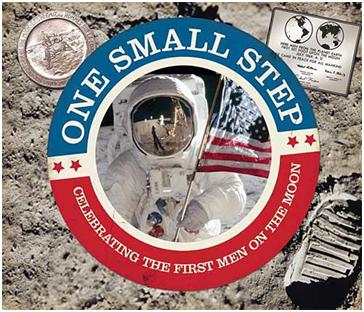 The second book is a One Small Step: A Scrapbook. 2009 is the 40th anniversary of the Apollo 11 landing on the moon. Each of the kids books I’ve reviewed has its own strengths. This one takes the original tack of being a scrap-book assembled by a contemporary 12-year-old, named Mike – after astronaut Michael Collins, one of the crew-members of Apollo 11. Mike’s mom works for NASA so he’s been able to collect a lot of unique items. This is not a 3-dimensional pop-up book, but the publisher has cleverly used different paper stocks and printing techniques so that photographs are on separate small glued-in backings. There are lots of flaps to lift for additional information. There’s a press pass taped in on the launch-day pages, and a metallic etched plate which reproduces the plaque placed on the lunar lander. The front page of the New York Times from July 21, 1969 is folder over and pasted in a few pages later. Each graphic or picture has its own extended caption. Each one explains a particular facet or event in the moon landing. The result is very much a you-were-there feel. The book seemed to me to effectively convey a much more real sense of what the events were really about and how they were experienced by those who lived through them.
The second book is a One Small Step: A Scrapbook. 2009 is the 40th anniversary of the Apollo 11 landing on the moon. Each of the kids books I’ve reviewed has its own strengths. This one takes the original tack of being a scrap-book assembled by a contemporary 12-year-old, named Mike – after astronaut Michael Collins, one of the crew-members of Apollo 11. Mike’s mom works for NASA so he’s been able to collect a lot of unique items. This is not a 3-dimensional pop-up book, but the publisher has cleverly used different paper stocks and printing techniques so that photographs are on separate small glued-in backings. There are lots of flaps to lift for additional information. There’s a press pass taped in on the launch-day pages, and a metallic etched plate which reproduces the plaque placed on the lunar lander. The front page of the New York Times from July 21, 1969 is folder over and pasted in a few pages later. Each graphic or picture has its own extended caption. Each one explains a particular facet or event in the moon landing. The result is very much a you-were-there feel. The book seemed to me to effectively convey a much more real sense of what the events were really about and how they were experienced by those who lived through them.
One Small Step is an oversize hardback, 24 pages and available directly from Greenleaf Press for $24.95 by clicking on any of the links in this review.
